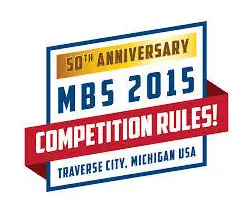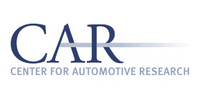Steve Purdy Report : 2015 C.A.R. Automotive Management Seminars - Day Two
 |
CENTER FOR AUTOMOTIVE RESEARCH
MANAGEMENT BRIEFING SEMINARS 2015
50TH ANNIVERSARY
DAY TWO
By Steve Purdy
Senior Editor
The Auto Channel
Michigan Bureau
 |
The storms have passed and the power is restored at the Grand Traverse Resort. We in the media room are no longer in the dark. Some think it a good thing to keep us there, but good journalists like us can always see the light.
Discussions continue about the state of development of autonomous cars. Toyota’s chief executive engineer, Chuck Gulash, reminded us that we’re still a good way from being able to kick back and let our cars do all, or even most, of the driving for us. Autonomous cars remain a topic of intense interest here on day two as the scientists, engineers, public policy makers and product planners pontificate about how and when we’ll see something resembling a hands-off driving experience. I’m tempted to invite my friend Mitch, the author of sci-fi novels that speculate on this technology, to come next year and share his thoughts.
New car dealer analysts talk about profit margins remaining at around 2% - among the slimmest margins of any business sector of the economy. Auto dealers have adapted to rely more on finance and insurance, service contracts and other peripheral activities instead of profits from selling new cars to make their businesses thrive. In other dealer-related discussions we heard experts talking about the impending glut of off-lease used cars in coming years that will result in some real bargains in that market.
We spent some time today with the Detroit Regional Chamber’s MICHAuto leader Glenn Stevens. His agency leads the effort to promote and support the automobile industry in Southeast Michigan. They recently launched a Mobility Initiative at a political conference on Mackinac Island that seeks to build Michigan’s physical infrastructure, capitalize on existing assets, take advantage of Michigan’s leadership in automotive technology and ensure the state’s educational system – both secondary and higher education – to support the industry’s needs.
Speaking of infrastructure, Mr. Stevens talked about the newly dedicated autonomous vehicle test facility near Ann Arbor called M-City and proposed test tracks for Willow Run and the old Detroit City Airport. Those combined projects will assure Michigan’s leadership in development and testing of the next generation of mobility.
In other news from the podium Chevy Volt chief engineer, Andrew Farah, announced the second generation of GM’s extended range electric gets an estimated range of 53 miles/charge, up from 38 for the first generation car, and the price will drop about $1,200 to $33,995. With the usual Federal subsidy of $7,500 the car’s net cost could be $26,495. While the Volt may not meet the needs of many car buyers it can be ideal for others – ideal for a city dweller who can live mostly within the range limits. Of course, because the car has a range extender, it can be driven on long trips when you run out of electrons, unlike full electric cars.
VW chose this event to reveal details of a new engine they say will “reinforce” their leadership in small turbocharged engines. This EA211, 1.4-liter, direct injected unit replaces a 2.0-liter engine in the Jetta compact sedan. The new aluminum engine generates 184 pound-feet or torque at just 1,400 rpm. The exhaust manifold is integrated into the head and intercooler into the induction pipe. Both turbocharging and supercharging continue to be part of advanced powertrain development.
Another discussion – speakers and panel – revolved around the issues of government regulations that seek to control everything from emissions and safety to fuel economy. As has been the case for many years California stays in the forefront of these regulations with most states and the Feds following close behind. The California Air Resources Board continues to lead regulations including a 50%+ reduction in the use of gasoline and diesel fuel by 2025.
A limiting factor in making progress in maximizing zero-emission vehicles is the lack of a national energy/transportation policy. Lack of consistency among jurisdictions that support the goals leave much ambiguity that manufacturers can either take advantage of in avoiding extra cost or it can limit their ability to pursue altruistic goals, if that’s the direction they want to take.
One of the more lively discussions this afternoon revolved around the role of subsidies in promoting electric and hybrid vehicles. The disagreements about the proper role of government in this realm mirror that of other political discussions, that is, the determination of how much intervention is justified. The risk of too much official involvement is to distort the market. The risk of too little intervention is to fail to meet emissions limits that have been set to save the planet. Panelists offered thoughtful opinions on all sides of that issue and speculated on what effect next year’s presidential election could have on the big picture.
More to come on Day Three when the governor and other dignitaries attend. We will be interviewing, among others, the US Department of Commerce Assistant Secretary about the government’s thrust to improve our manufacturing base.
ęSteve Purdy, Shunpiker Productions, All Rights Reserved
CENTER FOR AUTOMOTIVE RESEARCH
MANAGEMENT BRIEFING SEMINARS 2015 Reports
SEE ALSO: Speaker Presentations (PDF)


